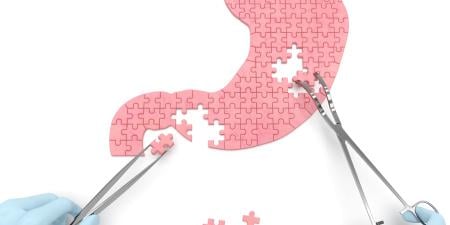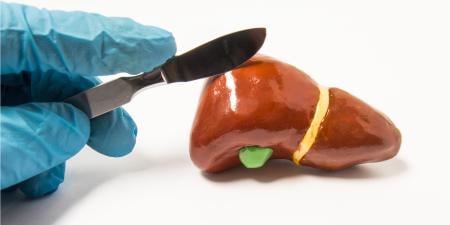Several years ago I resigned from a board position with the local organ procurement organization (OPO) over the status of organ retrieval from those with severe brain injury. I resigned with a heavy heart but a wary brain because I am a supporter of organ transplantation. Why else would I have agreed to join the board of an OPO? It was pro bono service in the pursuit of a good—the giving of life to patients in dire need of replacement organs in the face of end-stage disease. But there was another set of goods, emerging goods, for a different constituency—some patients with disorders of consciousness—that seemed in opposition to some of the policies pursued by the mainstream organ donation community. I was particularly concerned about patients who were in the minimally conscious state (MCS), a brain state just above the vegetative state.
Disorders of Consciousness: A New Nosology
To put all this into context and avoid nosological confusion, it is best to review some definitions, limiting ourselves to brain injuries that result in a loss of consciousness.
Let us start with coma, which is an eyes-closed, self-limited state that finds the patient unresponsive and unarousable. The most serious of comas progress to brain death, defined as the irreversible loss of function of the whole brain, including the brain stem and higher cortical functions [1-3].
Comas can also evolve into a vegetative state (VS), which, in contrast to a coma, is an eyes-open state of unresponsiveness. Jennett and Plum first described the vegetative state as one of “wakeful unresponsiveness” marked by autonomic brain-stem function [4]. Vegetative patients demonstrate nonpurposeful, autonomic behaviors such as sleep-wake cycles, blinking, eye movements, and even the startle reflex [5]. These patients are not conscious or self-aware. By most definitions, the vegetative state becomes persistent once it has lasted for 1 month; it becomes permanent 3 months after an anoxic injury and 12 months after traumatic injury [6, 7].
The minimally conscious state, in contradistinction to VS, is a state of consciousness, although it is episodically and intermittently demonstrated. According to the Aspen Criteria of 2002 [8], MCS patients demonstrate unequivocal, but fluctuating, evidence of awareness of self and the environment. They may say words or phrases and may gesture. They also may show evidence of intention, attention, memory.
Prognostically, reaching MCS before VS becomes permanent is a critical milestone because, once that plateau is reached, the possibility for additional recovery seems to have no expiration date. The timeline is open-ended, with rare recoveries to emergence—defined as the consistent and reproducible recovery of consciousness and an awareness of self, others, and the environment—taking place years or decades later [9].
Organ Retrieval and Recovery from Severe Brain Injury
Federal regulations require that Organ Procurement Organizations (OPOs) be notified of the impending death of potential donors [10]. The timing of this notification can be self-evident: the patient on life support and vasopressor agents that maintain the blood pressure artificially, whose end is inevitable, no matter the intervention. But sometimes, the end is contingent upon decisions about the withholding or withdrawal of life support.
Case in point: what to do about those who have sustained a severe brain injury. Totally dependent upon ventilator support for at least airway protection if not ventilation as well, they can quickly become the imminently dying if a decision is made to withdraw the ventilator. And once such decisions are contemplated, regulations would have it that the OPO be notified about the possibility of what is commonly and euphemistically termed a potential organ harvest.
My problem as an OPO board member was that, too often, patients like these were viewed as if they were destined or compelled to die. They were seen as organ donors even before their organs had outlasted a viable body—and brain. As an ethics consultant at an academic medical center, I had seen OPO representatives hover in an ICU, waiting to sweep in—as some intensivists have described it to me—and collect what they viewed as rightly theirs—organs that would have a salutary effect on another human being.
I use the word “hover” deliberately, if a bit provocatively, because that is how families of many brain injury patients viewed it. I know this from interviews with more than 40 families, each with a member who had a disorder of consciousness, who came to Weill Cornell Medical College for enrollment in neuroimaging and EEG studies designed to elucidate mechanisms of recovery. While they were here, we conducted extensive interviews with patients’ surrogates about their experiences with the care system as they made their journey from acute injury on through rehabilitation and chronic care [11].
One of the most powerful scenes, often repeated, occurs early in the course of care, when patients are still in the ICU: surrogates are approached for organ donation. After the patients survive and recover to varying degrees of function, these families still resent what is often described as the predatory behavior of OPO representatives. Many families report zealous attempts at procurement and a near-certainty about their loved one’s prognosis: death was inevitable, ventilators should be withdrawn, and organs should be redirected for some greater good. But with valuable hindsight, families later ask, how did they know? And how could they have been so wrong, both medically and perhaps ethically?
These are key questions that we need to untangle about the sociology of organ procurement. Why was there such certainty about these brain-injured cases when in fact many recovered, albeit to a level of function most of us would not desire? What was the basis of such prognostic confidence, when the work of scholars like Nicholas Christakis tells us that we are often quite poor at prognostication [12]? How did they know?
Brain injury seems to be a special case, constructed by historical and social context, because of how the designation of brain death and the vegetative state came into being. The concept of brain death was a product of the advent of transplantation and the need to procure organs. It is no accident that Christiaan Barnard’s first heart transplant [13] and the Harvard Criteria for Brain Death authored by Henry K. Beecher and others [1, 14] date to 1968. Indeed, as the Harvard Criteria were being promulgated [15], Beecher proposed a utilitarian policy for retrieving the organs of those who had lost consciousness to help “those who could be helped” [16]. Here we see the link between the loss of consciousness and the correlative obligation to help others—presumably those who are conscious—through organ retrieval.
But there is a problem with this formulation. Brain-injured patients are, as is self-evident, especially prone to the loss of consciousness, which is generally the end-stage stigma of terminal illness and the prompt for surrogates to put a DNR in place for their loved one [17, 18]. But loss of consciousness might just be the start of a recuperative process for patients with severe brain injury, who begin their journey with a coma, an eyes-closed state of unconsciousness.
Organ retrieval can be, in some cases, what I would call premature harvesting before a patient has had the opportunity to declare himself. Comatose patients who have brain-tissue herniation, or are near herniation with massive edema, might be accurately said to be facing a dire, if not mortal, outcome. Other patients in coma may have the potential for significant recovery. The ethical action, in my view, is to better risk-stratify patients with a favorable prognosis from those with a grim one, recognizing that coma, per se, is not necessarily the harbinger of a fatal outcome.
Although investigative efforts are under way to better understand mechanisms of recovery and prognosticate outcomes for patients with disorders of consciousness, using methodologies like functional neuroimaging [19, 20] and electroencephalography [21], these interventions remain experimental, and sometimes the bedside exam, functional imaging, and EEG can yield discordant results [22, 23]. Thus, it is important to stress that, despite the media hype often occasioned by neuroscience results [24], these methods are not yet ready for clinical use. In many cases it is better to wait and let these patients declare themselves before making a decision to withhold or withdraw care, which is the requisite—and importantly separate—decision on which organ donation is predicated.
Temperance
So let me suggest a modest proposal: temperance in the setting of organ retrieval. By temperance, I mean to invoke the notion of moderation and “rational self-restraint” [25] in soliciting donations. But it is not just about temperance in the sense of moderation. It is also temperance in the context of temporality [26]. I mean to appeal to the temporal flow of recovery, which is charted by a biology we, as yet, do not understand.
One of the tertiary definitions of temperance in the Oxford English Dictionary refers to keeping time, as in music [25]. To offer a metaphor, I would suggest that clinicians also need to keep apace with the rhythms of recovery. Clinicians should of course be sensitive to and respect a patient’s prior wishes about withholding and withdrawing life-sustaining therapy. But when wishes are unclear or have not been expressed, it is also important not to stop a process of recovery before its trajectory can be better known. To do so would be akin to not knowing there was a fourth movement in Beethoven’s Ninth Symphony and abandoning a performance before the chorus sang.
I would propose a moratorium upon solicitation when the outcome is unclear. In these indeterminate cases, I would urge clinicians to see how the patient emerges from the comatose state. How and when that occurs can have prognostic implications that can help surrogates make judgments about ongoing life-support in the wake of any prior wishes.
Although this “time out” may be difficult, even painful, for surrogates, it helps inform the decision process, making it more patient-family-centered [27]. That additional bit of deliberation is morally good for both the patient’s family (the “donative sources”) and any potential recipient of such a gift. That additional element of process might assuage any misgivings or guilt that might accompany the giving, or receipt, of an organ because it helps ensure that the donative act was neither coerced nor forced but rather one of informed altruism, a standard for which we should strive, particularly given the recent encroachment of the market into the donative space [28].
References
-
A definition of irreversible coma. Report of the Ad Hoc Committee of the Harvard Medical School to Examine the Definition of Brain Death. JAMA. 1968;205(6):337-340.
-
President’s Commission for the Study of Ethical Problems in Medicine and Biomedical and Behavioral Research. Defining Death: Medical, Legal and Ethical Issues in the Determination of Death. Washington, DC: Government Printing Office; 1981.
-
National Conferences of Commissioners on Uniform State Laws. Uniform Determination of Death Act; 1980. http://www.law.upenn.edu/bll/archives/ulc/fnact99/1980s/udda80.htm. Accessed February 15, 2012.
- Jennett B, Plum F. Persistent vegetative state after brain damage. A syndrome in search of a name. Lancet. 1972;1(7753):734-737.
-
Jennett B. The Vegetative State: Medical Facts, Ethical and Legal Dilemmas. New York: Cambridge University Press; 2002.
-
Medical aspects of the persistent vegetative state (1). The Multi-Society Task Force on PVS. N Engl J Med. 1994;330(21):1499-1508.
-
Medical aspects of the persistent vegetative state (2). The Multi-Society Task Force on PVS. N Engl J Med. 1994;330(22):1572-1579.
- Giacino JT, Ashwal S, Childs N, et al. The minimally conscious state: definition and diagnostic criteria. Neurology. 2002;58(3):349-353.
- Lammi MH, Smith VH, Tate RL, Taylor CM. The minimally conscious state and recovery potential: a follow-up study 2 to 5 years after traumatic brain injury. Arch Phys Med Rehabil. 2005;86(4):746-754.
-
Conditions of participation for hospitals. 42 CFR, vol 3 part 482, subpart C.
-
Their stories, and more about the scientific work to better understand brain conditions like the minimally conscious state, will be told in my forthcoming book, Rights Come to Mind: Brain Injury, Ethics & The Struggle for Consciousness (Cambridge University Press, anticipated 2012).
-
Christakis NA. Death Foretold: Prophecy and Prognosis in Medical Care. Chicago: University of Chicago Press; 2001.
-
Barnard C. One Life. New York: MacMillan; 1969.
- Beecher HK. Definitions of “life” and “death” for medical science and practice. Ann NY Acad Sci. 1970;169(2):471-474.
- Fins JJ. Constructing an ethical stereotaxy for severe brain injury: balancing risks, benefits and access. Nat Rev Neurosci. 2003;4(4):323-327.
- Beecher HK. Ethical problems created by the hopelessly unconscious patient. N Engl J Med. 1968;278(26):1425-1430.
- Fins JJ, Miller FG, Acres CA, Bacchetta MD, Huzzard LL, Rapkin BD. End-of-life decision-making in the hospital: current practices and future prospects. J Pain Symptom Manage. 1999;17(1):6-15.
-
Fins JJ. Ethics of clinical decision making and communication with surrogates. In: Posner J, Saper C, Schiff ND, Plum F. Plum and Posner’s Diagnosis of Stupor and Coma. 4th ed. New York: Oxford University Press; 2007.
- Fins JJ. Neuroethics and neuroimaging: moving towards transparency. Am J Bioeth. 2008;8(9):46-52.
- Laureys S, Owen AM, Schiff ND. Brain function in coma, vegetative state, and related disorders. Lancet Neurol. 2004;3(9):537-546.
- Goldfine AM, Victor JD, Conte MM, Bardin JC, Schiff ND. Determination of awareness in patients with severe brain injury using EEG power spectral analysis. Clin Neurophysiol. 2011;122(11):2157-6218.
- Bardin JC, Fins JJ, Katz DI, et al. Dissociations between behavioural and functional magnetic resonance imaging-based evaluations of cognitive function after brain injury. Brain. 2011;134(Pt 3):769-782.
-
Fins JJ. “Wait, wait—don’t tell me”…tuning in the injured brain. Arch Neurol. In Press.
- Racine E, Waldman S, Rosenberg J, Illes J. Contemporary neuroscience in the media. Soc Sci Med. 2010;71(4):725-733.
-
Temperance. Oxford English Dictionary online. http://www.oed.com/view/Entry/198885;jsessionid=3F00612CA603DEB92784B53F728E6C8E?redirectedFrom=temperance#eid. Accessed February 15, 2012.
-
Fins JJ. The ethics of measuring and modulating consciousness: the imperative of minding time. Prog Brain Res. 2009;177:371-382.
- Fins JJ. Rethinking disorders of consciousness: new research and its implications. Hastings Cent Rep. 2005;35(2):22-24.
- Matas AJ, Hippen B, Satel S. In defense of a regulated system of compensation for living donation. Curr Opin Organ Transplant. 2008;13(4):379-385.



